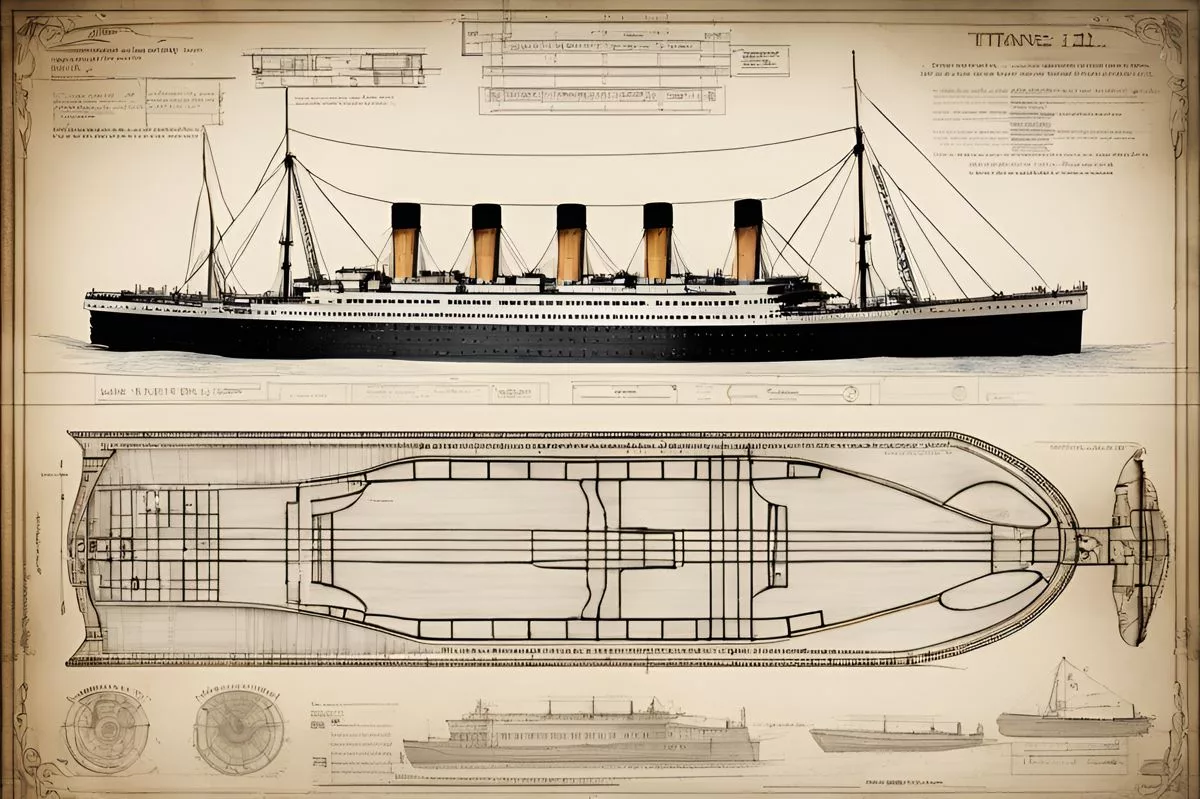Australian billionaire Clive Palmer has announced plans to construct a replica of the Titanic, named Titanic II, which will be “far, far superior than the original”. The project has been in the works for over a decade and faced multiple obstacles, but construction is set to begin in 2022 with the inaugural sail scheduled for June 2027. The project is more than just a display of wealth, but a tribute to human ambition and progress.
Can Clive Palmer Really Recreate the Titanic?
Yes, he can! After over a decade of planning and overcoming multiple obstacles, Clive Palmer is set to begin construction on Titanic II in 2022. The replica is expected to be “far, far superior than the original” and will honor human ambition and progress while reflecting advancements in design and engineering. The inaugural sail is scheduled for June 2027.
In an orchestration of magnificence and daring aspiration, Clive Palmer, an Australian tycoon, revealed his grand plan to reconstruct the most notorious cruise ship in history – The Titanic. The story was narrated during a press conference at the world-renowned Sydney Opera House on Wednesday, the 13th of March.
Palmer, a billionaire driven by infinite dreams and an impressive fortune, has been nurturing this specific vision for more than a decade. His aspiration? To revive the Titanic, a ship associated with opulence, disaster, and the unstoppable drive of human ambition. The inaugural cruise of this ill-fated vessel took place on the 10th of April 1912, a date archived by the National Ocean and Atmospheric Administration. The ship was carrying approximately 2,240 passengers and crew members, all oblivious of the calamity that was about to befall them.
However, the Titanic soon met its end in the embrace of an iceberg. As it plummeted into the icy abyss, it claimed the lives of over 1,500 people, leaving only 700 survivors behind to recount the unfortunate incident. Thus, it gained the grim reputation of the world’s most disastrous voyage.
A Century Later: The Rebirth of Titanic
Fast-forward to over a hundred years later, Palmer is ready to bring the Titanic back to life. In his recent conference, he affirmed that his financial resources were more than adequate to embark on the project of constructing Titanic II. It seems that the concept of this venture has been persistently occupying his thoughts, regularly stirring him awake with visions of the Titanic setting sail from the Hudson River.
After 12 years of persistence and overcoming three failed attempts, Palmer’s tenacity seems to be bearing fruit. The construction of this historical replica is scheduled to kick-off at the beginning of next year, with the inaugural sail planned for June 2027.
Palmer, a mining mogul and founder of the Blue Star Line company, remains unperturbed in the face of skepticism regarding his ambitious project. Critics argue that his dream to replicate the Titanic is merely a publicity gimmick. However, Palmer is steadfast, asserting that his wealth is sufficient enough to replicate the Titanic not just once, but tenfold.
The Road to Realization: Overcoming Challenges
The journey to this juncture, however, has been far from smooth. The project was initially put on hold in 2015 due to a dispute over payment and was subsequently delayed by the onset of the Covid-19 pandemic. Yet, Palmer now seems more resolute and committed than ever before.
During the Wednesday briefing, he claimed to derive more pleasure from the challenge of recreating the Titanic than accumulating his massive wealth. This declaration not only showcases his unwavering spirit but also his dedication to turn this dream into reality.
More than a Ship: Honoring Human Ambition and Progress
Palmer is weaving a story that goes beyond the mere revival of a ship. It’s about honoring human ingenuity, ambition, and resilience. Titanic II will be a testament to the grandeur of its predecessor, while also reflecting advancements in design and engineering. Palmer promises it to be “far, far superior than the original”.
Clearly, this project is more than just a display of wealth and luxury for Palmer. It’s a tribute to the spirit of the original Titanic, embodying human ambition and celebrating the unyielding march of progress. As we eagerly await the launch of this new vessel, we look forward to witnessing a chapter of history being re-envisioned, reconstructed, and once again, setting sail into the future.
When is the construction of Titanic II set to begin?
The construction of Titanic II is set to begin in 2022.
When is the inaugural sail of Titanic II scheduled for?
The inaugural sail of Titanic II is scheduled for June 2027.
Has Clive Palmer faced any challenges in realizing his dream of recreating the Titanic?
Yes, the project has faced multiple obstacles, including disputes over payment and delays due to the Covid-19 pandemic.
What makes Titanic II different from the original Titanic?
Titanic II is expected to reflect advancements in design and engineering and will be “far, far superior than the original”.
What is the motivation behind Clive Palmer’s project to recreate the Titanic?
Clive Palmer’s project to recreate the Titanic is more than just a display of wealth and luxury. It is a tribute to human ambition and progress, celebrating the unyielding march of progress and honoring the spirit of the original Titanic.
Who is Clive Palmer?
Clive Palmer is an Australian billionaire and mining mogul who is the founder of the Blue Star Line company. He is the driving force behind the project to recreate the Titanic.








